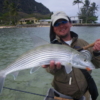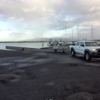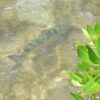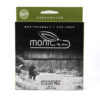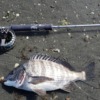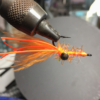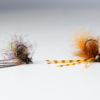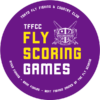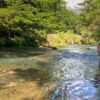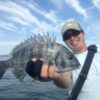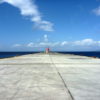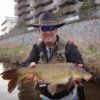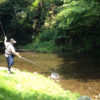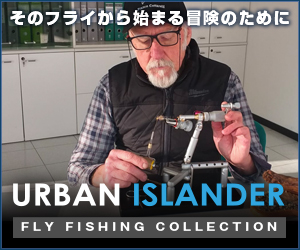Bonefish | Soto Iwashi
Pacific Bonefish or Long-jaw Bonefish
Albula Fosteri or Albula Argentea
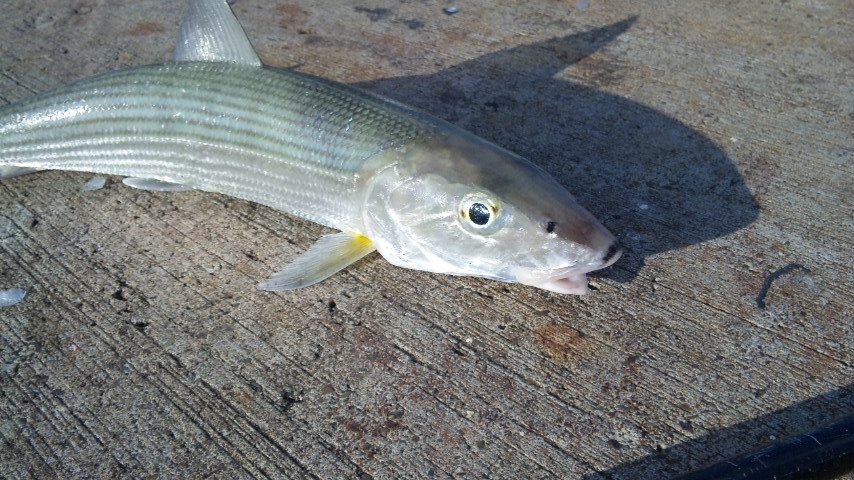
There are 11 kown species of bonefish in the world and 3 of them are found in the waters of Japan.
Overview
There is very little study of bonefish in Japan coming from zero commercial hauls causing academy to ignore the fish entirely in a great contrast with how much attention given to this species' family in Americas and the Soutch Pacific due high value in sports fishing.
As observed in Hawaii, school of adult bonefish gather in full-moon/spring tide in shallow flats in the Pacific for mating rituals then massive number of floating eggs will hatch into fries. They are carried away trapped inside ocean current then reach to the islands in the Pacific where they will be tested for survival or take residence if fit for thriving.
This long journey of survival make them very wary but also determined to seek the best location to feed - that is located in shallow inshore water less than 10m deep rich in their food organism supported by nutrients from nearby rivers. They are constantly cruising in coast between deeper water to shallow reef/flat to also avoid their predators, sharks and giant trevallies. Combination of those factors make some reef/flat daily feeding ground where fly fishing can be established.
In flyfishing, flies imitating nektons such as crustaceans and small gobies are presented naturally as easy meal after punching through ever blowing wind in open flats without spooking bonefish who is about to feed. Once struck, bonefish will run for its life with full strength asking for epic fight. Above all those bottom feeding fish, bonefish excel in technicality of game, imersion into natural environemnt, and speed.
Bonefish in Hawaii
Best location to fly fish for bonefish is, however, Oahu Island in Hawaii. Class A field easy to travel to, availability of guides and fly shop, and the density of bonefish population. However, it is highly pressured bonefish habitat where fishes are contantly under stress having human presence from residence, boating, and anglers frequently going after them.
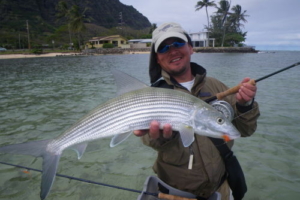
Why going for rather challenging bonefish? Oahu's average is 6lb fish when other places are 4lb. 10lb fish is not rare here.
Other islands in Hawaii have bonefish too, but they don't have flats as fit as Oahu.
Fly Shop
Clyaton & Sean run Hawaii's only fly shop: the Nervous Water Fly Fishers. This is a great shop where both local guides and DIY anglers gather exchanging daily information serving as information centre much like in surfing or diving. It's also the best place to check for local rules that kees updating including where to park and whose house to watch out while you are wading outside someone's house.
There are some DIY locations well-known to anglers, but it is still best to check with local experts.
Presentation
Very similar to how to present flies to other bottom feeders such as caprs and seabreams. Fly must be "picked up" by fish instead of "struck" after successfully presented in front of fish, lines need to be relaxed but with slight tension to detect the take, and this has to be done under windy cicumstances that often take away cocentration while you need to find the fish by either visually confirm one or identify the signs fish leaves such as subtle wake known as nervous water or tale of fish when one is feeding the bottom.
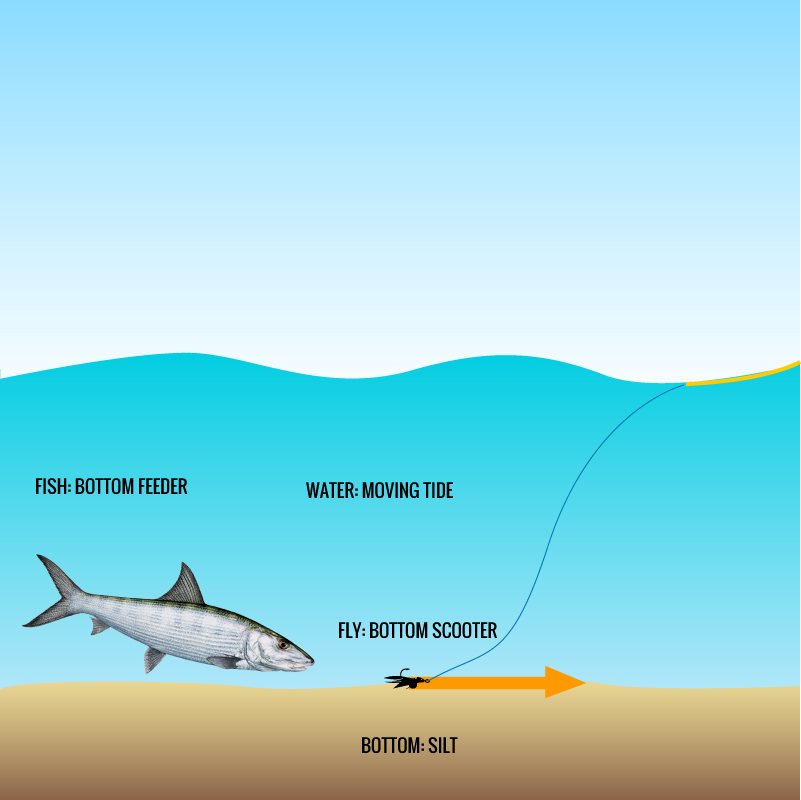
When you spot the fish coming to your way, you have to call a fish - not as easy as written and why you need a guide trip or more to get used to. Then you need to cast weighted fly with wide loop to minimize the impact when touching water while making sure to turn over the whole thing - not mindlessly cast and let it hit the water hard, but perfect turn over to set up from fly to rod tip.
Once fly reaches the spot, let it sink to the bottom and take away excessive slack from line system and hold loose tension. When fish "tails" where fly is or make nervous water, pull the line gently to examine the take or not. If fish is not interested in, crawl the fly without leaving the bottom by slowly pulling fly line then go back to the same routine.
Some strike is very aggressive allowing anglers to set hook on a moment's notice, but in many cases you have to examine through line system and when enough tension is felt (meaning that fish has picked up the fly and turned around) set the hook by pull a feet or two fly line without raising the fly rod.
This way if you miss the hook set, fly is still in the same zone. If you set the hook, Banzai!!
After the successful hookset, there goes the running bonefish. Make sure it doesn't run into obstacles such as reef edge or mangroves.
Fly Tackle
In sight fishing situation on flats where you are wading knee deep shallow, singlehand 6/7wt with floating line is the best choice. Stealth is the key to sucess, so the best fly line is clear fly line with aggressive taper such as Monic's Advanced Clear Plus.
When you are fishing deeper spot such as in reef, singlehand 8wt or above. If you are in special spot taken by boat for 10lb challenge even singlehand 10wt is your best friend to tame the wind. In both cases, stealth is required, but not as much as in shallow flats.
Please see how it is done for seabream (Japanese text).
Fly Pattern
As natural color as possible in shallow water, but vivid colour such as orange and pink in deeper water.
My Personal Conclusion of Requirement for Bonefish Fishery
Bonefish being bottom feeder can sustain by feeding in not too shallow water of 3-9m where enough sunlight reach to grow vegitation to nurture crustaceans or small baitfish which limits access for fly fishing. But then some fishery meet the right requirement where bonefish come into shallow enough area.
Habitat
- Current with high salnity and warmth is near by - how bonefish parrs reach the location
- Water that doesn't go bellow 24 °C - so fish don't die out during winter
- Nighttime resting place/mating place available without too many sharks - surviving parent fish
- Gulf with sandy bottom adjacent to brackish water connected to rivers with rich nutrient
- In reef or cove providing flats
- Large brackish water sections - bonefish can come frequently into shallow during stormy weather
This only bring them to less than 3m water, so they need to be forced into the shallowest.
Condition for Daytime Encounter in Shallow
- Flats meeting above requirement is adjacent to deep area more than 9m deep - forcing them hands in super-shallow to feed
- Flats have tons of food
- Bonefish population is dense and flats don't have too many sharks or birds of prey - seeing them and keeping them long enough for presentation
Bonefish Family: Albulidae
There are 11 species of Albulidae in the world where they look very similar with sublt variations.
Japan has the same 3 bonefish species as in Hawaii.
- Soto Iwashi | Pacific Bonefish | Albula fosteri-argentea
- Marukuchi Soto Iwashi | Round-Jaw Bonefish | Albula glossodonta
- Small-scale Bonefish | Albula oligolepis
Indo-Pacific holds another 4 species:
- Korean Bonefish | Albula koreana ・・・South East Asia, Taiwan, and southern tip of Korea
- Pacific Shafted Bonefish | Albula pacifica
- Cortez Bonefish | Albula gilberti・・・endemic to Sea of Cortez in Mexico
- Eastern Pacific Bonefish | Albula esuncula・・・Southern Mexico
Atlantic holds 4 traditinal species:
- Bonefish | Albula vulpes
- Threadfin Bonefish | Albula nemoptera
- Channel Bonefish
- Lagoon Bonefish
この記事のディスカッションに参加する | Join the Discussion
東京フライフィッシング&カントリークラブのFacebook グループ「Friends Lobby」ではメンバー以外の方とのディスカッションも行っています。気になる情報や質問などはこちらまで!


